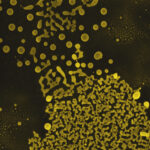
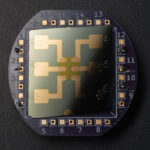
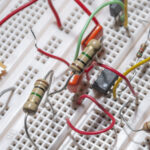
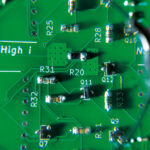
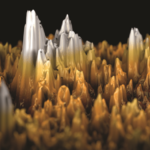
Artificial neuromorphic systems aim at the reproduction of the brain performances, typically using components obtained by top-down lithographic technologies regularly employed by digital computers. Unconventional in-materia computing has been proposed as an alternative strategy, exploiting the complexity and collective phenomena originating from various classes of physical substrates, to overcome energy consumption wall. The use of materials composed by a large number of non-linear nanoscale junctions, random assembled according to a non-deterministic strategy on a substrate, are of particular interest for the implementation of in-materia computing systems. In particular, the employment of random-assembled memristive materials is a strategic solution for the development of energy efficient and neuromorphic computing devices, well beyond the von Neuman bottleneck.
In CIMaINa, we develop neuromorphic devices based on films obtained by the assembling of metallic nanoparticles and, in particular, Au cluster-assembled films. They have shown interesting non-linear electrical properties and complex resistive switching phenomena. This has been exploited for the fabrication of devices able to perform binary classification of boolean functions. The nanostructured devices implement the model of Receptron, as a reconfigurable non-linear threshold logic gate. This model describes a threshold system where the input weights are not univocally related to a single input, hence, they cannot be independently adjusted. The nonlinear characteristic is similar to what observed in the interactions between synapses in neural dendritic trees. In this sense, the model of the Receptron (reservoir perceptron) is a generalization of the Perceptron model as a threshold logic gate: the weights are not univocally related to a single input making the Receptron intrinsically nonlinear and capable, as a single device, of classification tasks not achievable by individual perceptrons. Receptron is functionally complete and it is not limited to the classification of linearly separable functions. The outputs of Receptron cannot be directly and accurately controlled because of the extremely high number of junctions involved and the metastable configurations of the system, thus making Receptron a kind of random and unpredictable device.
Furthermore we develop resistive switching devices based on nanostructured gold or platinum able to integrate analog signals, and process voltage pulse trains autonomously.
Edge computing strategies, the need for in loco processing of analog data and for computing units integrated with sensor devices in a single system, exceed the Boolean algebra and the information coding based on binary inputs. Moreover, hardware computing solutions able to perceive and to adapt to external stimuli are strategic for the implementation of embodied intelligent system. We prove the integration of such a type of resistive switching device into flexible and stretchable matrix. The nanocomposite device preserves the electrical conductivity even in stress conditions and adapts it in response to the different mechanical stimuli the system receives in a non-trivial manner. Even more interestingly, the resistive switching flexible and stretchable nanocomposite device processes and integrates differently analog inputs, according to the external mechanical stimuli applied to the device.
The use of such neuromorphic devices is a key solution for the development of embodied adaptive intelligent systems.
Patent: Electronic computing device for generating boolean functions
Referents: Francesca Borghi, Paolo Milani
francesca.borghi@unimi.it
paolo.milani@mi.infn.it